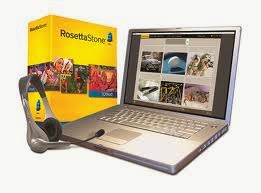1. Read and understand the information below.
2.Answer the questions just from activity 1 individually.
3.Hand in this developed work in the English copybook on Friday 7th.
Activity 1 – Background information (individual activity)
Let’s go
back in time to August 20th, 1757. The President of the Real
Audiencia de Quito applies the mandate by which the King of Spain, Charles III,
decrees to expel all members of the Society of Jesus from Spanish territories,
including the Spanish America. Two hundred sixty nine Jesuits were expelled
from Ecuador victims of Charles’ III mandate.
The mandate
also decreed that any Jesuit who, without the King's express leave, returned to
Spanish dominions under any pretext, even that of having resigned from the
society and being absolved from the vows, would be treated as an outlaw, incurring
in, if a layman, the penalty of death; and, if a priest, that of confinement.
On May 28th,
1815, a royal decree abrogated Charles’ III mandate, and allowed the
re-establishment of the Society of Jesus in all Spanish territories. However, and
despite of the people’s will, by 1850 no Jesuits had come to Ecuador yet. On
the contrary, in 1852, President José M. Urbina, expelled a group of Jesuits
who had come after being inhumanly expelled from Colombia in 1851.
Answer the following questions.
Please remember to answer with complete sentence. (10 points - 2 points each):
1. What was the
purpose of the mandate that was decreed in 1757? Who was the King at that time?
2. What could
happen to the Jesuits that stayed or returned to any Spanish territory at that
time?
3. What did 1815
royal decree do?
4 4. . Did
people support the Society of Jesus to be re-established in Ecuador?
5. What happened
to the Jesuits who arrived to Ecuador in 1951?
Deadline: March 7, 2014
Activity 2 – The Legacy of the Society of Jesus (group
activity)
Now it is
1862, the Jesuits are called to come back to Ecuador by President Gabriel
García Moreno. On March 28, the first Jesuits arrive in Guayaquil and they are assigned
to undertake an important mission: the development of education in the country.
Each group
will be assigned an important work undertaken by the Jesuits who arrived in Quito
in the XVI and XIX centuries: The Church of the Society of Jesus, the Escuela
Politécnica Nacional, the Colegio San Gabriel, the Observatorio Astronómico.
Objective: Get to know four of the most important work
undertaken by the Society of Jesus in Quito and analyze how that work has
contributed to our society until nowadays.
1.
Essay and exposition:
a.
You
will have to visit the place that you have been assigned and become an expert
on it. After gathering all the information write an essay and prepare an
exposition to share the most important information with you classmates.
b.
When
you visit the site ask for information about it to help you answer the
following general questions:
·
What
is it?
·
When
was it founded?
·
Who
was/were its founders?
·
Important
facts about the site.
·
Curious
facts or anecdotes about the site.
c.
Before
visiting the site, think of 5 questions that you think will be relevant to ask
in the place you will visit.
d.
With
all the information that you collect you will have to write an essay that you
will organize as follows:
i.
Introduction: (120 words – 2 points)
Give general information to introduce the place
that you visited:
·
What
is it?
·
Where
is it located?
·
When
was it founded?
·
Who
founded it?
ii.
Body: (400 words – 5 points)
You should include the following information:
·
Important
facts about the site you visited (including the answers to your questions and
the extra information you are given).
·
Curious
facts or anecdotes about the site.
iii.
Conclusion: (130 words – 2 points)
You should answer the following questions:
·
Why
was this place important in the time when it was founded and why is it
important nowadays?
·
How
has this place contributed to the Ecuadorian society?
iv.
Bibliography ( 1 point)
Due dates:
Essay: March 14, 2014
Expositions: from April 23 to April 25
2.
Log -book
The
log-book will be your final product. It should contain all the evidence and
descriptions of your visit. In the log-book you should keep:
a.
Notes
and descriptions of your visit.
b.
Evidence
of your visit or visits (date/s, name/s, signature and/or stamp of the place/person/s
who gave you the information).
c.
Poster,
leaflets and/or brochures with information (if you are given any).
d.
Pictures
(with descriptions) of your visit showing the place in the outside and in the
inside; any material (books, pictures, etc) that was shown to you.
e.
Short
summaries of the information included in your essay (after the essay is
corrected).
f.
Other
information that you are given at the site.
Due date: May 7, 2014
3.
Assessment:
·
Essay
+ reading comprehension: 10 points
·
Exposition:
10 points
·
Log-book:
10 points
